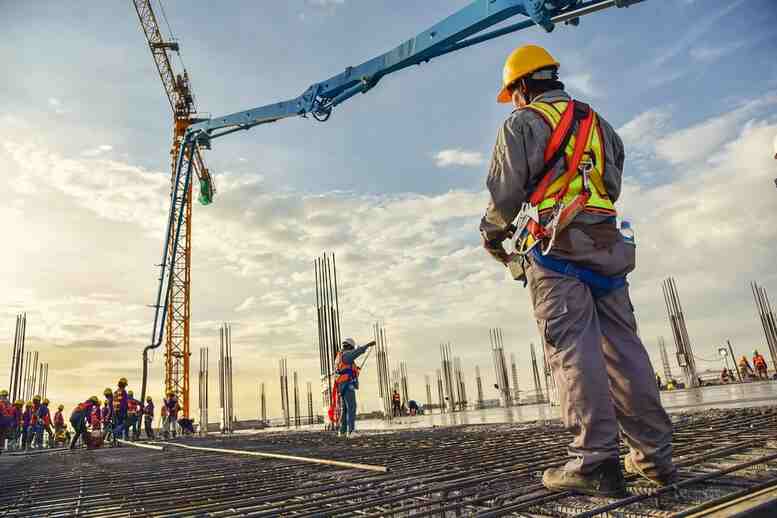Downtime can cost your project more than just time—it can drain your budget, delay deliverables, and tarnish your reputation. Whether it’s a construction site or an industrial project, having the right equipment for the job isn’t just a convenience; it’s essential. This blog will guide you through choosing reliable equipment, considering key factors, and minimizing downtime through proper maintenance. By the end, you’ll understand how to keep your project on time and budget while maximizing efficiency.
The Cost of Downtime on Job Sites
Downtime can spell disaster for construction sites and industrial projects. Equipment failures, delays in sourcing replacements, or mismatched tools not only hold up the work but also lead to lost revenue. Projects often lose up to 20% of their productivity due to unscheduled downtime.
Why does this happen? Often, it’s the result of using equipment that isn’t suited for the task or isn’t maintained adequately. This is why selecting the right equipment at the outset and ensuring proper upkeep is crucial.
The Importance of Matching Equipment to the Task
Think about this scenario: You’re managing a construction site with a demanding schedule, and you’ve chosen a smaller excavator to save on initial expenses. While it may seem like a budget-friendly decision, this equipment’s limited capacity could require significantly more time to finish the job, leading to missed deadlines and higher labor costs.
Matching equipment to the task is critical, as it has a direct impact on:
- Productivity
- Efficiency
- Safety
- Overall project cost
By taking the time to understand your project’s requirements upfront, you can prevent unnecessary disruptions and ensure that your team has the right tools to succeed.
Key Factors to Consider When Choosing Equipment
Selecting the best equipment for your job isn’t just about size or price. Here are the top factors to evaluate when making your decision:
1. Durability and Reliability
Your equipment needs to withstand the demands of your specific project. For heavy-duty sites, prioritize machinery built with robust materials and proven reliability. Look for equipment with a strong track record in similar conditions.
2. Maintenance Requirements
Regular, preventive maintenance can save your project from costly downtimes due to unexpected breakdowns. Choose equipment with accessible parts, simplified service schedules, and local support to minimize delays in repairs. Comprehensive warranties are a bonus.
3. Versatility
If your project involves multiple tasks, investing in versatile equipment can save time and money. For instance, a skid-steer loader with various attachments can efficiently perform digging, lifting, and grading operations.
4. Material and Terrain Compatibility
Ensure the equipment is built for the materials you’ll be working with (e.g., weight, density) and the site conditions. If your job site involves rocky or uneven terrain, equipment like all-terrain cranes or articulated dump trucks should be at the top of your list.
5. Operator Training and Safety Features
Advanced equipment is only as effective as its operator. Choose machinery that’s intuitive and comes with built-in safety features like backup cameras, safety alarms, and easy-to-use controls. Additionally, ensure your team is well-trained in operating the equipment.
6. Rental vs. Purchase
For short-term projects, renting equipment is often the more cost-effective choice. Many companies, including those in Utah, offer rentals like all-terrain cranes with maintenance included, saving you time and effort. However, for long-term needs, purchasing equipment may prove to be the more economical option.
By balancing these factors, you’ll be well on your way to efficiency and reliability on your worksite.
Examples of Equipment and Their Ideal Uses
Every piece of equipment has its strengths. Here’s a quick guide to help you match the right equipment with the right task:
1. All-Terrain Cranes
- Ideal for:Moving heavy materials over rough or uneven surfaces, such as on undeveloped job sites or oil fields.
- Why choose it?These cranes combine the strength of a crawler crane with the mobility of a truck crane, making them perfect for tasks requiring both lifting power and adaptability.
2. Excavators
- Ideal for:Digging and moving large amounts of earth or material, often used in trenching, foundation work, or demolition.
- Why choose it?Its hydraulic arm and various attachments make it versatile for many applications.
3. Skid-Steer Loaders
- Ideal for:Small- to medium-scale tasks, such as grading, clearing debris, or snow removal.
- Why choose it?Compact size and multiple attachment options allow it to handle tight spaces or varied tasks.
4. Vibratory Rollers
- Ideal for:Compacting soil, gravel, or asphalt, making them key for road construction or foundation work.
- Why choose it?It reduces air voids in soil and improves surface durability.
5. Generators
- Ideal for:Providing power in remote locations or as a backup electricity source.
- Why choose it?Ensures uninterrupted operations, particularly for electrical tools and equipment on-site.
Tips for Preventive Maintenance to Minimize Downtime
Once you’ve selected the right equipment, keeping it running smoothly is the next challenge. Proper maintenance ensures your machinery’s longevity and reduces the risk of costly delays:
1. Develop a Maintenance Schedule
Stick to the manufacturer’s recommended service intervals for each piece of equipment. Use tools like maintenance calendars or apps to keep everything organized.
2. Inspections Before and After Use
Train operators to inspect equipment for wear and tear, leaks, or other issues before starting work each day. Post-use inspections can catch potential problems early.
3. Use Genuine Parts and Quality Fluids
Using subpar replacement parts or fluids might save money initially but can cause significant long-term damage. Always stick to manufacturer-approved materials.
4. Record Maintenance Logs
Track every service, repair, and part replacement. This history can help identify recurring issues and improve your decision-making for future purchases or rentals.
5. Partner With Reliable Vendors
Work with trusted suppliers who offer dependable maintenance services and quick turnaround on repairs. Renting equipment often includes maintenance support as part of the package.
Conclusion
Selecting the right equipment and committing to regular maintenance may seem like extra effort, but it’s an investment that pays off in spades. By minimizing downtime, you’re not just safeguarding your project’s timeline and budget; you’re also ensuring a safer, more efficient worksite for your team.
Read More: Georgina Rodríguez



